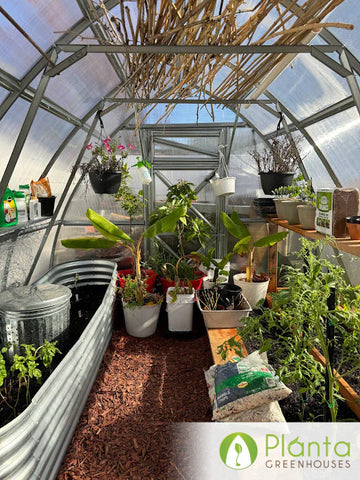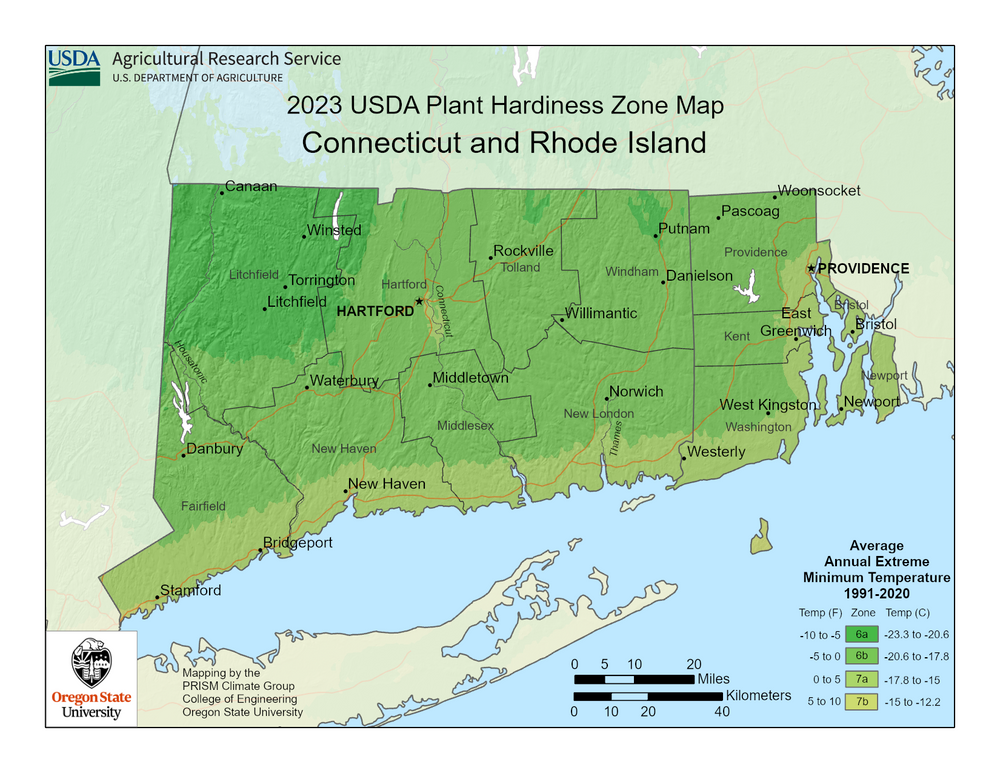Image from USDA
Characteristics of Connecticut’s Planting Region
Connecticut's climate is classified as humid continental, characterized by four distinct seasons:
- Springs are capricious, with temperature swings and late frosts not uncommon
- Summers bring warmth and humidity, occasionally punctuated by heat waves
- Autumns paint the landscape in vibrant hues, with gradually cooling temperatures
- Winters can be harsh, featuring significant snowfall and cold snaps
The state receives ample precipitation, averaging 45-50 inches annually, distributed fairly evenly throughout the year.
As a Connecticut gardener, you may encounter:
- Unpredictable spring weather with potential late frosts
- Hot, humid summers
- Early fall frosts in some regions
- Heavy winter snowfall
- Coastal influences along Long Island Sound
- Varying soil types from sandy loams to rocky glacial till
Despite these challenges, Connecticut offers a respectable growing season. Most areas enjoy frost-free days from mid-April through mid-October, providing about 170-190 days for cultivation annually.

Challenges of Growing in Connecticut
1. Soil Variability
The state's glacial history has resulted in a patchwork of soil types. From acidic soils in many areas to pockets of alkaline soil in limestone regions, Connecticut gardeners often need to amend their soil for optimal growth.
2. Pest and Disease Pressure
The state's lush environment and humidity can foster plant diseases and support various pest populations. Vigilant monitoring and integrated pest management are often necessary.
3. Wildlife Interactions
Connecticut's diverse wildlife can challenge gardeners, from deer in suburban areas to woodchucks and rabbits in rural settings.

The Benefits of Using a Greenhouse in Connecticut
While Connecticut's climate allows for a moderate outdoor growing season, a greenhouse can significantly enhance your gardening experience and yield.
1. Extend Your Growing Season
- Without a Greenhouse: The typical outdoor growing season in central Connecticut runs from mid-April to mid-October. Northern areas may have a slightly shorter season due to later spring frosts.
- With a Greenhouse: Greenhouse owners can start planting as early as late February and continue well into November or even December. This extension allows for multiple harvests and the cultivation of crops that typically struggle in Connecticut's colder climate.
Learn more about your area's specific growing dates and the best vegetables to plant in each part of Connecticut.


Customer images of their Greenhouse setup in Connecticut
2. Grow a Wider Variety of Vegetables Without a Greenhouse:
- Without a Greenhouse:
Connecticut's outdoor gardens thrive with cool-season crops in spring and fall, and warm-season crops in summer, such as:
|
|
- With a Greenhouse:
A controlled environment allows for a wider variety of plants, including those that prefer warmer temperatures or a longer growing season. You could grow:
|
|
|

Why Planta Greenhouses?
- Wind resistant up to 65 mph (learn more about how our greenhouses hold up in high-altitude climates).
- Withstands a snow load of up to 98 psf (480kg/square meter).
- Made with a heavy-duty galvanized steel frame.
- Polycarbonate panels provide 100% protection against UV rays.
- The Sungrow greenhouse is bell-shaped - allows the wind, snow, and hail to slide off the sides.
- Extendable (Sungrow, Sigma and Farmer models can be extended beyond 100ft)
- Made in Europe and are exclusively imported
- Maintenance-free

